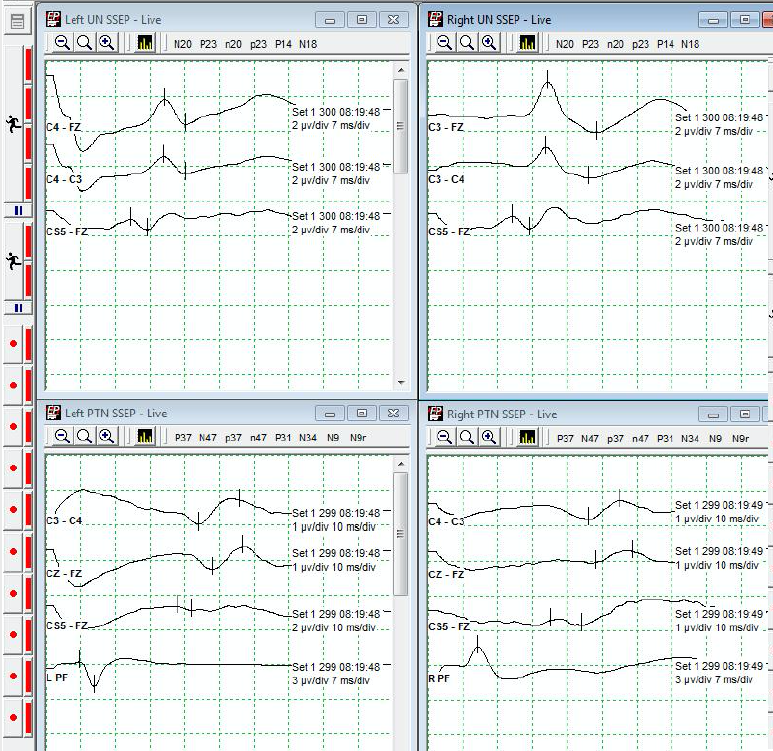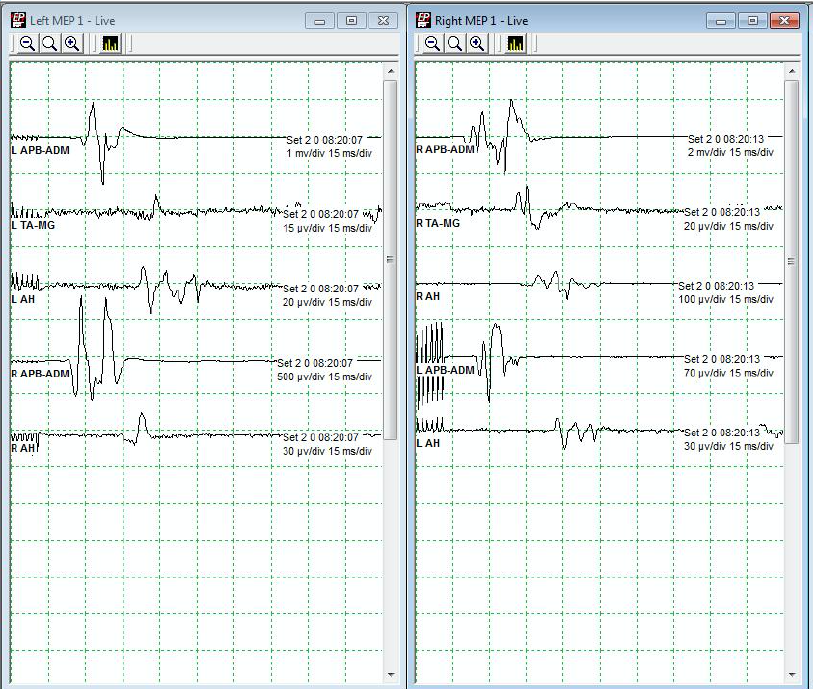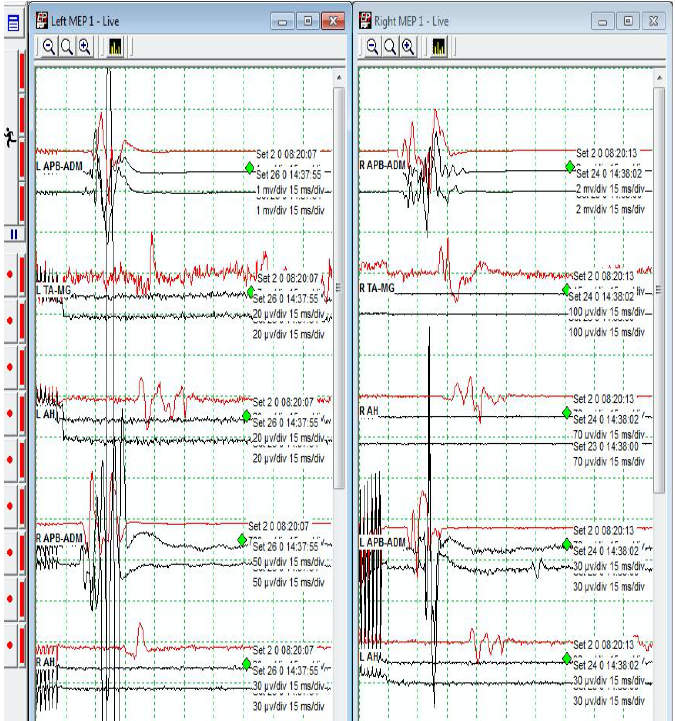
This patient was a 66 year old male who presented with an intramedullary lesion at T9-10 causing bilateral leg weakness. Relevant history factors were hypertension and a TIA in 1996. Despite the patient having myelopathy, the tech was able to record reliable SSEP and MEP, although the lower extremity MEP were low amplitude.


Once the surgeon performed a laminectomy and durotomy, surgeon began resection of the tumor. During resection, a latency shift of the bilateral PTN SSEP occurred with some amplitude loss. The surgeon was alerted to the loss of SSEP and requested a set of MEP, which remained intact. Over the next two hours, SSEP continued to shift until they were absent.

Four hours from the initial change, the leg MEP were lost bilaterally and surgeon was alerted. The surgeon opted to abort the procedure without having resected the lesion.

In post-op recovery, the patient was unable to move his legs.
Although this was not an ideal outcome for the surgery, this does highlight the use of neuromonitoring.
The surgeon discontinued resection of the tumor after losing MEP, and the patient regained some movement approximately one week post-op. At three month follow-up, the patient could walk with assistance. It’s reasonable to think that the surgeon would have continued resection of the tumor if neuromonitoring had not been present to alert and that the deficit in the patient’s legs may not have resolved in three months.

Peyton Standefer, CNIM
Education Manager
